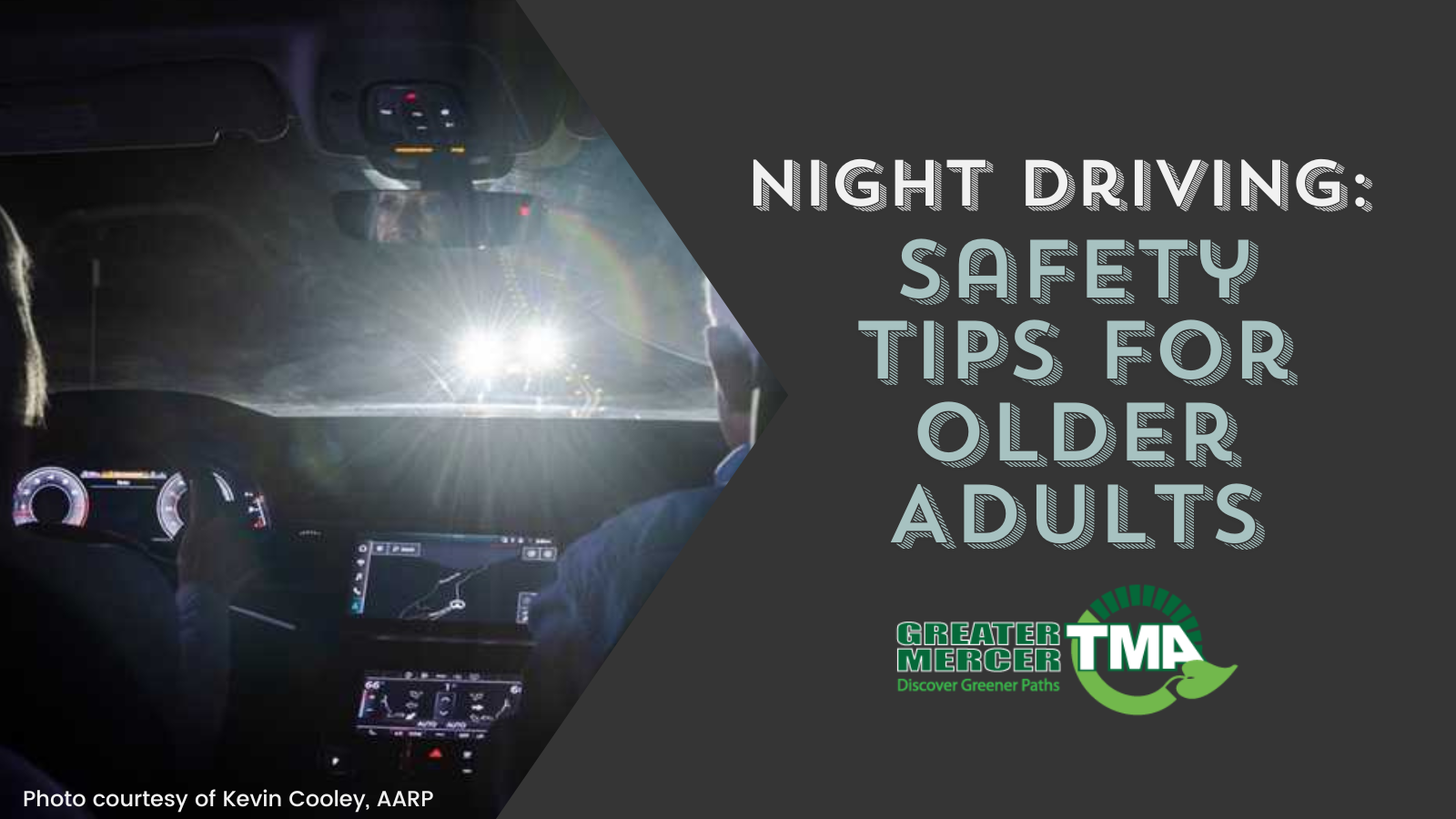
As we age, certain aspects of our lives require more caution and attention. One such area is driving, particularly during the night. According to the National Safety Council, although only a quarter of driving occurs after dark, half of all fatal car crashes occur during this time. Drivers are less likely to wear seat belts at night, are more often under the influence of alcohol or drugs, and are more prone to be fatigued. When we combine these factors with the reduced visual capacity experienced by an older adult, it can quickly become dangerous.
As an older adult, it’s essential to recognize and adapt to the challenges of nighttime driving. This blog will explore some critical safety tips to help older adults confidently navigate the roads after dark.
- Ensure Optimal Vision:
Maintaining good vision is crucial for safe driving, particularly at night. Schedule regular eye exams to check for age-related vision changes such as cataracts, glaucoma, or macular degeneration. If prescribed, wearing glasses or contact lenses will significantly enhance your vision and minimize the chances of a crash.
- Adequate Lighting:
Before heading out:
- Ensure that all your vehicle’s lights are working correctly.
- Check the headlights, tail lights, brake lights, and turn signals regularly.
- Clean the lenses to remove dirt or debris, which can dim the lights’ effectiveness.
Proper lighting helps you see the road better and makes your vehicle more visible to other drivers. The good news is that modern headlights are improving visibility on the road. A recent testing initiative conducted by the Insurance Institute for Highway Safety (IIHS) found that vehicles equipped with top-rated headlights experience 19% fewer nighttime crashes compared to those with lower-rated lights. The best new headlights use LED bulbs with a projector lens, explains Matt Brumbelow, a senior research engineer with the IIHS. If you’re considering a new car and driving at night is a concern, check out iihs.org, which offers overall vehicle safety ratings, including for headlights.
- Adjust to Changing Light Conditions:
Our eyes respond differently to light as we age. To accommodate for these changes:
- Allow extra time for your eyes to adjust to the darkness before driving.
- Avoid looking directly into the headlights of oncoming vehicles, as this can temporarily impair your vision.
- Utilize your vehicle’s sun visor to block out glare from other drivers.
- Turn off unwanted technology on your infotainment screens.
If you are in the market for a new car and driving at night is a concern, watch for a recent technology known as adaptive driving beams. These beams could give drivers about 165 to 195 extra feet of visibility, which, at 65 mph, translates into a couple of seconds of additional reaction time.
- Stay Alert and Focused:
Being fully alert and focused while driving at night is essential, as fatigue can quickly increase for older adults. Make sure you are well-rested before embarking on any nighttime journeys. If you find yourself feeling drowsy, pull over and take a short break. Avoid distractions such as using your phone, eating, or adjusting the radio while driving, as these can divert your attention from the road.
- Plan Your Routes:
Familiarize yourself with the routes you’ll be taking at night. Prioritize well-lit areas and roads with clear signage. If possible, avoid poorly lit, unfamiliar, or high-traffic routes. Utilize GPS navigation systems or smartphone apps to assist you with directions, but remember to set them before you start driving to minimize distractions.
- Increase Following Distance:
Maintaining an appropriate following distance is crucial for safe driving. Increase the distance between your vehicle and the one in front of you, as it allows for better reaction time and minimizes the risk of rear-end collisions. In low-light conditions, judging distances accurately is more challenging, so allowing extra space is a wise precaution.
Driving at night requires extra care and attention by everyone, and has added challenges as an older adult. You can enhance your safety and confidence on the road by prioritizing your vision with the tips from this blog. It’s better to be cautious and take time than to rush and compromise safety. Safe travels!
Resources:
https://www.idrivesafely.com/defensive-driving/trending/senior-drivers-need-more-light-drive-safely#:~:text=Senior%20drivers%20should%20always%20be,along%20with%20decreased%20night%20vision.
https://www.nsc.org/road/safety-topics/driving-at-night#:~:text=While%20we%20do%20only%20one,traffic%20deaths%20happen%20at%20night.
https://www.iihs.org/news/detail/iihs-strengthens-requirements-for-top-safety-pick-awards#:~:text=Vehicles%20with%20good%2D%20and%20acceptable,inferior%20alternatives%20off%20the%20market.
https://www.aarp.org/auto/driver-safety/driving-in-the-dark.html?cmp=EMC-DSM-NLC-OTH-WBLTR-1532702-1915109-7691419-NA-10212023-Webletter-MS3-NA-NA-S99A-Auto&encparam=KVzU7lRcd%2bpd1FvSeXVQkB6qyL%2bT5UgBOtH5%2f%2bXk9Wk%3d
https://www.aarp.org/auto/driver-safety/silence-driving-distractions/
